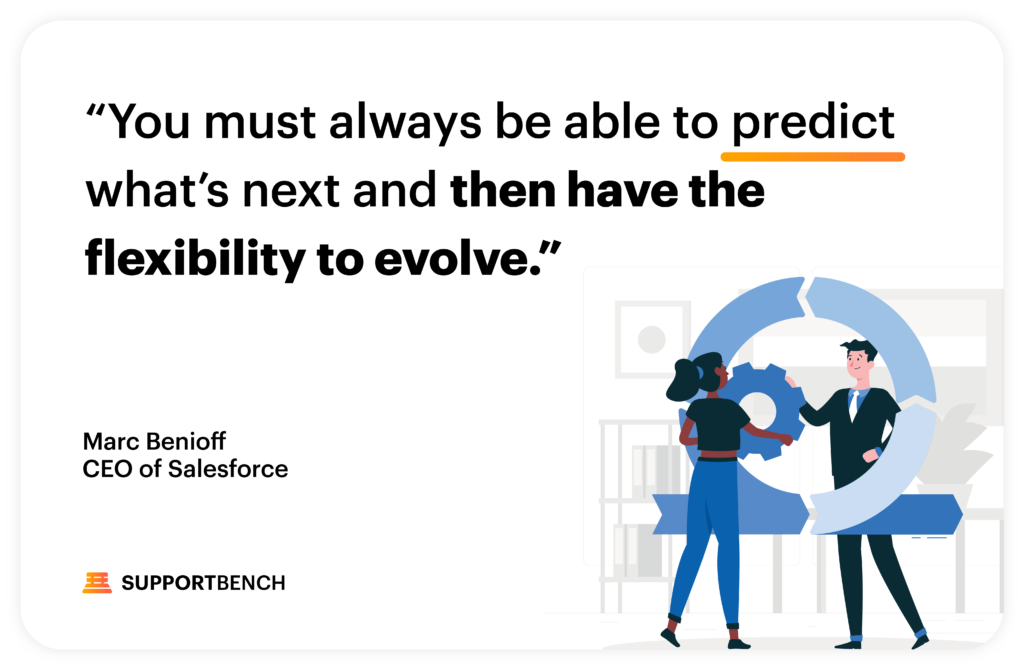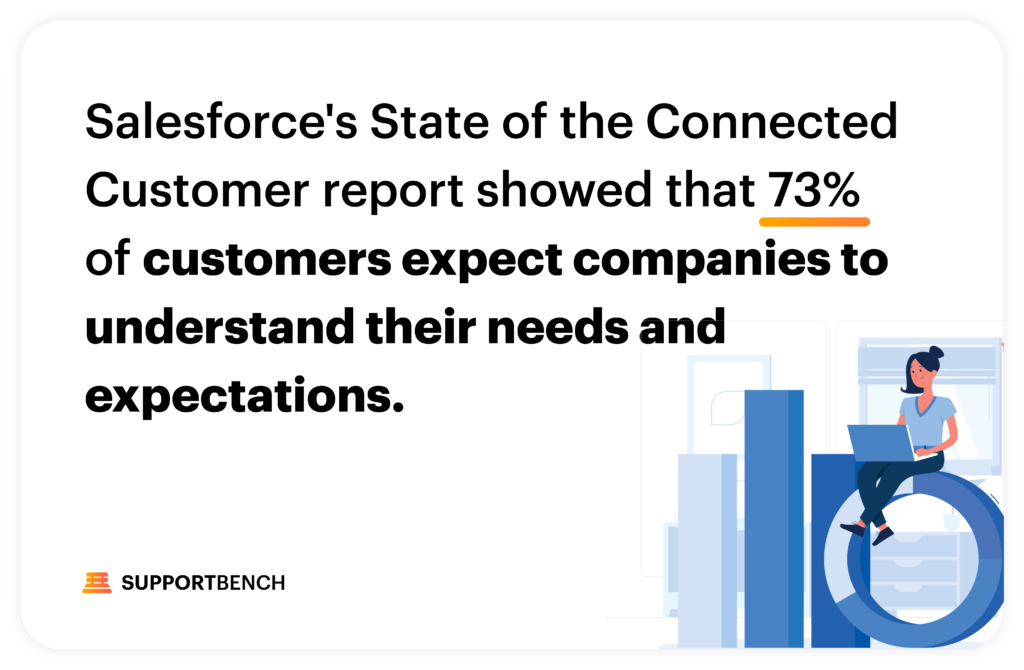In today’s hyper-competitive business landscape, companies that prioritize understanding their customers holistically hold the key to success. With the integration of tools like Salesforce, enterprises have a significant advantage. Salesforce, the world’s number one customer relationship management (CRM) platform, hosts valuable data points about every customer’s journey. By synchronizing this with your customer support systems, you open doors to unparalleled insights, efficiency, and improved customer relations. But how do you truly maximize this synchronization to offer comprehensive customer support?
The Importance of Comprehensive Customer Information

Before delving into the actionable trends, it’s crucial to grasp why having a comprehensive view of your customer matters. According to a recent study by Salesforce Research, 80% of customers say the experience a company provides is as important as its products or services. This statement is backed by numerous industry leaders.
As Marc Benioff, CEO of Salesforce, aptly puts it: “You must always be able to predict what’s next and then have the flexibility to evolve.”
Six Trends to Leverage Salesforce Synchronization Effectively
Unified Customer Profiles for Holistic Understanding
By synchronizing data from Salesforce, support teams can access unified customer profiles. These profiles house every interaction, transaction, and feedback from customers. So, imagine a customer reaches out with a complaint about a delayed service. With the integrated data, the support agent can instantly see that the same customer recently had a positive sales call and might be considering an upgrade. This context can guide the conversation, ensuring that the customer feels valued and understood.
Simply by integrating all touchpoints – from sales calls to email correspondence – into one unified system, you’re ensuring your customer support software can pull relevant data in real-time, providing agents with the most recent and relevant customer data.
Predictive Analytics to Forecast Needs
With fully integrated Salesforce data, support teams can use predictive analytics to forecast a customer’s needs or potential issues. So, if a series of customers who purchased a specific product package consistently face a particular problem after three months, predictive analytics can help identify and address this issue proactively. You would use a tool that can analyze patterns in Salesforce data to identify recurring issues and then create a proactive outreach program where support agents can contact customers before the predicted issue arises.
Contextual Automation for Efficiency
By harnessing the rich data of Salesforce, you can enhance your customer support automation to be more contextual and personalized. And, instead of sending generic follow-up emails after a support ticket is closed, you use Salesforce data to personalize these communications based on past purchases, preferences, or feedback. It’s as easy as using rule-based triggers in your support system to send contextual communications. Feed in Salesforce data to enhance the rules and ensure communications are personalized and relevant.
Sentiment Analysis for Improved Interactions
Understanding customer sentiment is crucial. With Salesforce data, you can combine transactional information with sentiment analysis tools to gauge how customers truly feel. For instance, if a customer had a series of negative interactions but recently made a significant purchase, sentiment analysis can help deduce whether their overall sentiment has improved or if the purchase was a necessity. This would be so helpful. You would use AI-driven tools to analyze customer communications and then sync this with Salesforce data to provide a clearer picture of customer sentiment over time.
Enhanced Security through Role-Based Access
By fully synchronizing Salesforce data, companies can better define role-based access. This ensures that sensitive data is only accessible to those who need it. So a junior support agent might not need access to a company’s full financial interactions with a client. But they should see recent transactions to address any related queries. When integrating Salesforce with your support system, just define strict access protocols and that will create tiered access levels to ensure data security.
Feedback Loop for Continuous Improvement
Using Salesforce data, companies can establish a feedback loop, ensuring that insights from customer support directly inform sales strategies. And if support agents consistently receive positive feedback about a particular product feature, sales teams can emphasize this in their pitches. Simply set up regular inter-departmental meetings where support teams share insights gleaned from Salesforce data. Use this feedback to refine sales pitches, product offerings, and support protocols.
Rethinking Salesforce Synchronization with Supportbench
While the article isn’t about selling Supportbench, it’s about reimagining the potential of Salesforce synchronization in the realm of customer support. It’s about understanding that by doing things differently – by integrating data, predicting customer needs, personalizing interactions, and ensuring data security – companies can truly elevate their customer support game.
Tools like Supportbench have recognized the immense potential that lies in Salesforce synchronization, emphasizing the importance of data-driven decision-making and seamless customer support management. By focusing on these values, enterprises are better positioned to cultivate stronger, more rewarding relationships with their customers – and after all, isn’t that the goal?
Support teams that don’t have this synchronization, put their departments at a disadvantage

When it comes to customer support, the landscape has dramatically shifted over the past few years. Customers no longer judge a company merely by the quality of the product or service they offer. Instead, they evaluate the entire experience – how they are treated, how their issues are resolved, and how well a company understands their unique needs. And in this arena, Salesforce synchronization isn’t just a luxury; it’s a necessity. Failing to leverage this critical integration can have significant and lasting consequences.
Loss of Customer Trust and Loyalty
Without synchronization, customer support teams may lack the essential context of past interactions, transactions, and feedback. This means customers may need to repeat themselves multiple times, recounting previous issues or interactions every time they engage with your team. It’s frustrating and gives an impression of disjointedness. Salesforce’s State of the Connected Customer report showed that 73% of customers expect companies to understand their needs and expectations. A failure in this understanding can quickly erode trust and loyalty, pushing customers to look elsewhere.
Reduced Operational Efficiency
Imagine two scenarios: In one, a support agent spends the initial minutes of every interaction piecing together a customer’s history from disparate databases and email threads. In another, the agent is instantly presented with a holistic view of the customer, thanks to synchronized data. Which agent do you think can resolve issues faster and more effectively? Disconnected systems lead to increased resolution times, more errors, and ultimately, higher operational costs.
Missed Opportunities for Cross-Selling and Up-Selling
A sales team empowered with insights from customer support interactions made possible through synchronization, is in a prime position to cross-sell or upsell relevant products or services. Conversely, without this connection, sales teams may push products that a customer has already complained about or misjudge the timing, resulting in lost revenue opportunities.
Inability to Predict and Prevent Issues
With synchronized Salesforce data, support teams can leverage predictive analytics to foresee potential issues and proactively address them. Without this insight, companies are always a step behind, reacting to problems rather than preventing them. Over time, this reactive stance can result in a deteriorated brand image and reputation.
Inaccurate Customer Health and Satisfaction Metrics
Without comprehensive data, companies may get a skewed understanding of customer health and satisfaction. For instance, a customer might show consistent purchases (indicating satisfaction) but may have multiple unresolved support tickets (indicating dissatisfaction). Only with integrated data can companies get a true sense of their customer health, allowing for timely interventions and relationship salvaging.
Compromised Competitive Advantage
Lastly, in an age where personalization is the norm and not the exception, companies that don’t offer tailored experiences due to a lack of comprehensive data stand to lose their competitive edge. Competitors who do harness the power of synchronized data will provide superior customer experiences, drawing customers and market share away from those who lag behind.
In the world of customer support, the age-old adage holds: “Forewarned is forearmed.”
While integrating and synchronizing tools like Salesforce might seem like an operational task, its implications are far-reaching, impacting trust, loyalty, revenue, and brand reputation. Firms that recognize and act on this are poised to lead, while those who overlook it risk not just stagnation, but potentially irreversible decline.











